From the edge of a bed in a rundown San Jose motel, a 21-year-old woman with burgundy hair and a small frame tearfully told police how Paul Griffin became the fearsome center of her world.
Another sex worker had jumped her on The Blade, a prostitution track along Monterey Road, and she recalled how Griffin chased away the attacker. He gave her advice about how to take calls and post ads.
To a newcomer in the flesh trade, Griffin seemed indispensable.
Then came the ground rules: no boyfriends, no free sex, no talking to other pimps.
In exchange for compliance and every dime of the $100,000 she claimed to earn in the year prior, he promised protection. The woman mentioned how their arrangement—presumably one of several for Griffin—afforded him a Maserati and a Jaguar. She told police how he threatened to slice up her face if she tried to leave. She described a kind of man notoriously hard to prosecute, someone brutal enough to scare victims out of testifying and moneyed enough to evade capture.
When San Jose police caught up to Griffin and booked the 33-year-old on a pimping charge in lieu of $50,000 bail, he called Bad Boys Bail Bonds. In a typical deal, Griffin paid Bad Boys a nonrefundable fee—which usually costs about 10 percent of the bail amount—to post a bond and secure his release. Bad Boys pledged to pay the full $50,000 if he skipped court, but wrote up an insurance policy in case he did.
With so much cash on the line, bail agents can go to incredible lengths to make sure the people they get out of jail keep their end of the bargain. But they hardly ever have to.
Years of lobbying have shaped California law to give bondsmen a surprising number of chances to avoid liability. If a client misses a court date, bail agents have six months to find them. If the bond forfeits, they can seize and sell assets from the accused and any co-signers to pay off the judgment. Defendants usually turn themselves in or get re-arrested. If a fugitive flees the state, companies can hire a bounty hunter to chase them down.
Or they can get taxpayers to foot the bill.
Industry of Abuse
Paul Griffin’s arraignment rolled around May 6 and the accused felon was a no-show. When he resurfaced as an inmate in West Virginia some weeks later, the Santa Clara County District Attorney’s Office tapped the U.S. Marshals Service to fly him back to San Jose and back into custody. In the past, that would have let Bad Boys off the hook. A judge would exonerate the bond and that was the end of it. But Alison Filo, the prosecutor handling the case, said the bonding company must first repay at least some of the extradition costs fronted by public law enforcement agencies. Just $2,202, a fraction of the real cost.
Bad Boys balked at the demand, which Filo based on a longstanding state law that is virtually never enforced. Penal Code section 1306(b): “If a court grants relief from bail forfeitures, it shall impose a monetary payment as a condition of relief to compensate the people for the costs of returning a defendant to custody.”
“The people,” of course, being taxpayer-funded prosecutors who fronted the bill to extradite the suspect.
If the $2,202 tab caught Bad Boys off guard, Filo says, that’s because no one—to her knowledge, based on extensive research—has ever held them or any other local bail company accountable for extradition costs. Law enforcement agencies have either taken the loss or asked for payback from another government entity, as the Santa Clara County Sheriff’s Office does from the state, for example. Either way, the public bears the cost. Filo only discovered the reimbursement clause earlier this year while dealing with a multi-agency probe into several other bonding companies.
“I thought this cannot be right, that you guys bailed him out and now we’re responsible for getting him back,” Filo says. “Generally, when you feel in your gut that something doesn’t sound right, you propose a change to make it right. Maybe there’s a legislative fix or policy change. In this case, it was already the law, but nobody paid any attention.”
Filo says she brought it up with other prosecutors at a statewide conference over the summer, and it was news to them, too. The oversight only surfaced this past year as nationwide criminal justice reforms put the commercial bail industry under a harsh spotlight. A growing coalition within the legal establishment, from prosecutors to public defenders, calls cash bail unconstitutional for creating separate justice systems—one for the rich, one for the poor. Another contention is that it gives little regard to public safety.
“Money is a terrible sorting mechanism for people who are dangerous,” says David Ball, a Santa Clara University law professor who taught a class on pretrial justice last year. “Not to mention the profit incentive makes it extremely prone to abuse.”
Only two nations on the planet, Ball adds, use commercial bail to define the pretrial release system: the United States and the Philippines.
Santa Clara County took the historic step of eliminating monetary bail for hundreds of inmates this past month. With 70 percent of the county’s jail population made up of pretrial detainees who spend an average of 224 days for felony charges and 28 days for misdemeanors, the goal is to shrink that figure so that nobody awaits trial behind bars because they can’t afford to bail out.
The unanimous Oct. 4 vote by the Board of Supervisors will essentially modernize the local bail system by expanding and formalizing the role of Pretrial Services, which uses a computer algorithm to predict whether a defendant will skip court or re-offend. On Tuesday this week, the county followed up on those changes by agreeing to replace colorful bail bond ads in jail with neutral white-and-black listings along with those for criminal defense attorneys.
The overhaul doesn’t end commercial bail—that may take a statewide legislative fix, which Assemblyman Rob Bonta (D-Oakland) pledged to tackle in the coming year along with state Sen. Bob Hertzberg (D-Van Nuys). But the county’s action at least stands to starve out a lot of the local industry.
For months leading up to the decision, bond agents defended their trade as the most cost-effective and efficient way to keep scofflaws in check. But prosecutors say that a closer look at monetized bail shows that the local industry runs up hidden costs on the public dime. The county’s reform vote this week does little to fix that. Recent investigations into abuses within the industry, however, have at least brought greater accountability—and a financial reckoning.
Uncompensated extraditions in this county alone have cost law enforcement agencies at least $100,000 in annual losses for an unknown number of years, Filo says. Multiply that out by 58 counties, and the potential loss becomes mind-boggling. Since she began applying state laws about reimbursement in her own jurisdiction this past March, Filo managed to recover about $40,000 in travel costs for nine out-of-state extraditions.
“It’s appalling to me that we have so much difficulty collecting what should be an easy fee,” Filo says. “This is not a very well-oiled machine.”
The courts, however, often take a far greater loss. If someone jumps bail, it’s up to bondsmen to drag the person back to custody or pay the full bail amount. To get that money to taxpayers, the court must declare the bond forfeited and then enter a summary judgment within 90 days. Yet throughout the state and here in Silicon Valley, courts have routinely eschewed that responsibility. With remarkably lax state laws that allow those debts to expire in two years, the systematic lack of enforcement allows millions of dollars to simply evaporate.
To get an idea of how much money is on the line in the South Bay alone, look at 2015. Last year, according to court data analyzed by Santa Clara University law student Shauna Lord, bail agents posted 7,599 bonds collectively worth nearly $199 million. Of those bonds, just 189 collectively valued at $3.4 million were declared forfeited. According to court officials, that’s fairly consistent with preceding years.
How much of that money resulted in default judgments and how much of it was collected remains unclear. Santa Clara County Superior Court spokesman Joe Macaluso has yet to provide an accounting of those judgments, despite repeated requests. Sources from the county say they were similarly rebuffed when they requested the same information. County officials say the proceeds from those judgments are supposed to end up in the general fund to pay for a wide range of public services.
At this point, the bail bond business owes California taxpayers an estimated $150 million, according to the nonprofit Justice Policy Institute. In a public hearing on the issue earlier this year, county policy analyst Matthew Fisk said the courts and prosecutors often forgo collecting that debt because it’s deemed impractical. That inaction on the part of the authorities, he said, “ends up being pure profit for the industry.”
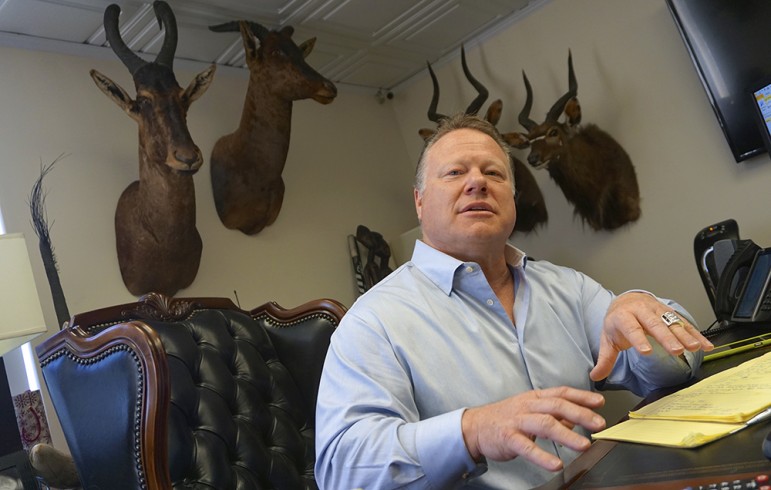
Jeffrey Stanley of Bad Boys Bail Bonds has turned his office into a big game hunting trophy room. (Photo by Jennifer Wadsworth)
Big Game
The executive suite of Bad Boys Bail Bonds doubles as a showroom for owner Clifford Jeffrey Stanley’s priciest hobby. Disembodied heads of a giraffe, a water buffalo, a zebra and a half-dozen species of antelope peer blankly from their wall mounts in his San Jose office. A taxidermy baboon in an Indiana Jones hat and black sunglasses holds a tray topped with a scrimshaw tusk and the bleached skull of his own kind.
“That’s Wellington,” Stanley says of the primate, which stands behind the ivory crescent of a polished elephant tusk. Displayed elsewhere: lion skulls and animal hides, an elephant tail, a grip-and-grin photo of Donald Trump and a rhinoceros penis mounted on a copper-rimmed wood base.
Stanley, a nationally ranked powerlifter turned bail bonds big shot, says he took up trophy hunting for the thrill of conquest, but he also has come to view it as a kind of charity. The tens of thousands of dollars he pays to shoot the exotic animals pay for wildlife conservation in Zimbabwe, he explains, while meat from each kill feeds hundreds of impoverished villagers. Talking about the villagers brings Stanley to tears.
“There’s so much need,” he says, before trailing off, squeezing his eyes shut and bowing his head. “I’m sorry,” he whispers, stabbing his forefinger on his desk with one hand and wiping away tears with the other. The Great White Hunter of bounty and big game is nothing if not impassioned about his polarizing pastime, profession and politics. The way Stanley sees it: hunting can be humanitarian, Trump should be president and bail bonds fulfill a constitutional right.
This last point is becoming an especially tough sell as public sentiment shifts against the privatization in favor of public alternatives. Stanley sees bail as an example of the freedoms afforded by the Constitution itself, while a growing number of critics cast it as a manifestation of social inequities. Bad Boys’ personnel have called themselves “constitutional advocates.” But lofty thoughts about life and liberty tend to get lost in the din of the industry’s tawdry promotion, which hasn’t helped its case amid recent reforms.
When Stanley stormed into the scene amid a bail bonds boom with his brother, Craig, in 1998, he upped the ante for every other firm in the South Bay with aggressive marketing. He got his friend, George Wallace, to dress up in drag and hired a DC Comics artist to sketch a logo. Bad Boys flooded the South Bay with its signature T-shirts, keychains and lanyards touting the slogan, “Because your mama wants you home!”
Where he couldn’t buy billboards, Stanley parked advertising vans or lime green Humvees. Or, he’d dispatch eye candy in form-fitting clothes to spread the gospel of Bad Boys outside the Hall of Justice. To industry stalwarts and regulators who scrutinized Bad Boys as part of a 2004 corruption probe, the Stanleys represented a new generation of high-volume bail bond companies that undercut the competition by making bail easier to get.
The franchise, which has since expanded to seven locations, floods its social media channels with cheesy raps and memes making fun of prison rape, racial stereotypes and criminality. “Waking up to morning sex is great,” reads one photo on a Bad Boys Twitter account, “unless you are in jail.”
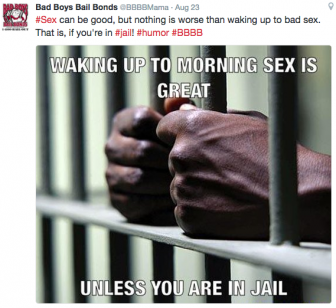
Four years ago, Stanley’s promotional tactics got him into a legal tussle with the San Jose Sharks, which accused the him of turning his season seats into free advertising by wearing T-shirts emblazoned with the Bad Boys logo.
The hockey team’s effort to prevent him from wearing the shirts went to court as a First Amendment showdown in which Stanley prevailed.
The county’s turn toward computer-calculated risk assessments concerns Stanley, he says, because it would put dangerous people back in the community. When people jump bail, police often lack the resources to extradite them, he points out. Stanley says his company spends $1 million a year to haul bail skippers back to court. “We have a 99 percent success rate,” he says. “We have to because we’re on the hook.”
The South Bay bonding business, which rakes in about $19 million a year in profit, has survived reforms in the past by the strength of its political connections—bail agents generously fund county political races—and the perceived lack of a viable replacement. This latest overhaul, however, marks a cultural as well as systemic shift.
While the concept of using money to guarantee a trial appearance dates back 1,000 years, it came of age as a business on the American frontier. This might explain the industry’s penchant for outlaw bravado. Public agencies that uncouple profit from pretrial release, on the other hand, were born out of the civil rights movement and are viewed as an existential threat to the bonding market.
“More and more, there’s this idea we’re a bunch of rich, greedy people making money off the backs of poor people in jail,” says Topo Padilla, a second-generation bondsman and head of the Golden State Bail Agents Association. “That’s the narrative put out there.”
Recent events have made it harder to shirk that reputation. In August last year, the state Department of Insurance and local law enforcement nabbed 31 local bail agents on a slew of felony charges, including allegations that they employed unlicensed bail agents and at least one convicted felon as a bounty hunter. Investigators say the bail agents also gave illicit “finder’s fees”—kickbacks, essentially—to inmates who referred new clients. Twenty-seven of them worked out of San Jose. The state Department of Insurance, which regulates the bail bonds sector, suspended 26 licenses at seven South Bay companies, including some of the biggest hitters: Aladdin, Hotline Bail and Luna Bail Bonds.
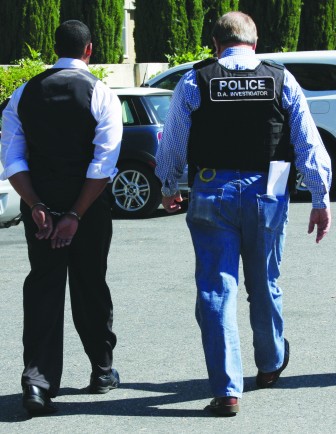
Authorities cracked down on the South Bay bail industry last year in an unprecedented sweep dubbed "Operation Bail Out."
Dubbed “Operation Bail Out,” the investigation peeled back the curtain on a system plagued by corruption.
Court records paint Dino Garcia as one of the more prolific offenders. The veteran bondsman took 1,000 calls from inmates over a six-month span in 2014, according to the sheriff’s office.
Inmates who referred newly booked detainees would haggle with Garcia and his colleagues over compensation, which often entailed adding money to their prepaid phone account or buying them commissary items like dried noodles.
“Give me some good ones, dude,” Garcia allegedly told an inmate during one such call in June 2014. “Some Asians, some fucking Asians and some fucking Hindus, man. Some good domestic violence ones.”
Collusion between inmates and bondsmen, which gives rule-breakers a competitive advantage, had been an open secret for decades before regulators decided to mete out some consequences. What’s more concerning is how the referral scheme pressured inmates to shell out cash before finding out whether they qualified for free or supervised released through the Office of Pretrial Services.
“The bail agents were so aggressive,” Filo says. “They were jumping the gun, offering bail to people who may not have needed it.”
At least one of the accused bail agents, Veronica Merelo, has been acquitted. Another, Jake Peters, who was caught up in a separate investigation, dodged charges of extortion and went right back to work.
The Two Jakes
When Greg Chiotti sprang his daughter out of jail in 2009, he paid Jake’s Bail Bonds a $1,500 fee on a $15,000 bond, using his house as collateral. He thought it was a done deal. The contract would cost him nearly everything he owned.
Chiotti’s daughter, in the throes of addiction and accused of felony welfare fraud, skipped her court date. That triggered a $50,000 bench warrant, which a judge later rescinded when she was placed back into custody. Jake Peters, owner of Jake’s Bail Bonds, charged another 10 percent fee, or $1,500, for the bond. Chiotti, a divorced retiree on a fixed income, had no idea until Peters put a lien on his Los Altos home six months later, demanding more than seven times the initial debt. To avoid foreclosure on the place he bought nearly five decades ago, Chiotti pulled $36,000 from an investment to pay Peters.
Six years passed. Chiotti’s daughter sobered up. The chaos settled. But then, just last year, Peters re-entered their lives.
A new foreclosure notice claimed Chiotti owed Peters more than $100,000, a fifth of that amount attributed to “recovery fees” to bring Chiotti’s daughter home from a Central Valley drug rehab.
“That’s when I knew this guy was a fraud,” says Chiotti, 76. “This is a crime.”
In December 2015, Peters was arrested on suspicion of extortion and released on his own recognizance—that is, for free. The 41-year-old bondsman has since been exonerated. A judge didn’t think the threat of foreclosure Chiotti faced rose to the level of extortion.
“I think we filed the most appropriate charge we had and, unfortunately, it doesn’t really encompass the tactics that were used by Mr. Peters,” says county prosecutor Filo. “Not every wrong has a criminal remedy. But I do believe that [Chiotti] is a victim in the truest sense. He’s a victim of predatory behavior.”
Chiotti says he racked up $20,000 in attorney fees—on top of the cash he paid Peters. Chiotti expects to pay even more as he takes the matter to civil court.
Veteran bondsman Robert Silva, who runs Amigo Bail Bonds with his wife, says he’s just as eager to see the industry cleaned up. His competitors’ illegal deal-making with inmates dramatically cut into his bottom line, Silva says, dropping his case load from 30 bonds a month to just three. For years, he says, he’s had to supplement his income with private detective work.
“You know, bail works and pretrial works,” Silva says. “Bail works when it’s done right, but right now they don’t have enough people to regulate it.”
A college-educated, military-trained and licensed private investigator as well as a bondsman, Silva says he’d like to see regulators raise the bar for certification. Right now, all it takes is a few-day course and a background check.
“That’s all it takes to give them the right to arrest, basically,” Silva says. “You’re giving people who may not have a high school degree the power to pull someone out of jail and knock down doors. I know a lot of people in the industry who have been arrested. It attracts the kind of people who have nothing to lose.”
Silva admits this level of freedom is what attracted him to the business.
“I loved being able to put on my vest and gun—legally, of course,” he says. “I love that I can go do motions and show up in court. I love that I could help families get their loved ones out of jail. But I have a lot to lose, so I do play it safe.”
Odds are Silva’s livelihood will suffer even greater losses from the county’s decision to effectively divest from commercial bail.
Stanley, head of Bad Boys, says he’s unfazed. “I feel optimistic,” he says.
In the run-up to this week’s vote, county supervisors backpedaled on some proposals, including a plan to lobby the state for legislative changes in support of pretrial services. From the dais last month, Supervisor Dave Cortese said he’s not in favor of eliminating monetized bail entirely, which the county doesn’t have full authority to do anyway. He said he wants to include bail agents on the citizen commission that came up with the policy proposals in the first place.
Stanley took it as a shred of hope.
“It’s great that they made a recommendation to include us going forward,” Stanley says. “We hope going forward that we will at least have a voice.”
The lifeline Cortese extended the bail industry—and Stanley specifically—could be seen as a political favor. When the Board of Supervisors president unsuccessfully ran for mayor of San Jose in 2014, the Bad Boys CEO held a fundraiser for Cortese at his Willow Glen home. Stanley, Professional Bail Agents of Santa Clara County President Steve Sparacino as well as the owners of All-Pro and Le Bail Bonds have also given $6,000 to Cortese political campaigns since 2012.
Regardless of what the citizen commission recommends, the industry’s hustle and hype may have finally met its match in the strength of its alternative—one that trades profit and instinct for insight and algorithms.
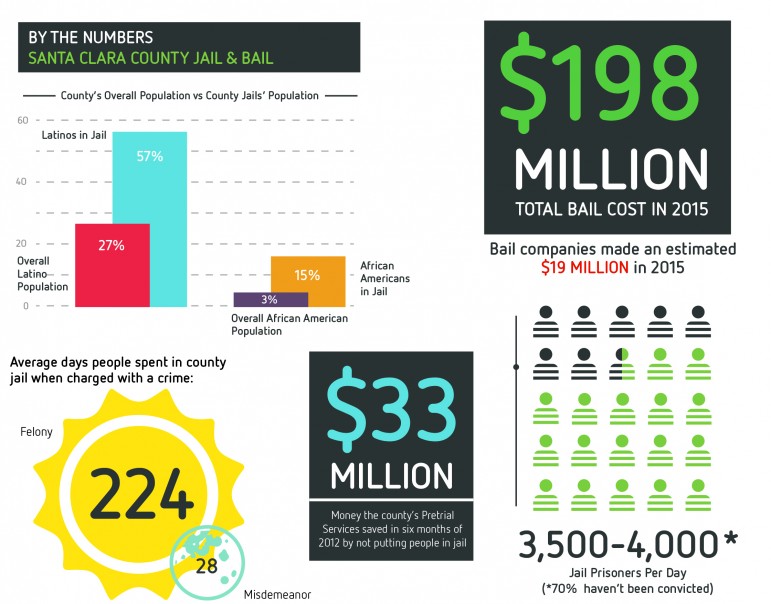
Illustration by Kara Brown. (Source: Santa Clara County Pretrial Services)
Algorithm Nation
Every day and virtually every hour, clerks seated behind a computer in the basement of San Jose’s Main Jail interview new arrestees to determine whether to release them or let them walk. The clerks—employees of Pretrial Services’ round-the-clock jail division—don’t set bail based solely on the alleged crime. Rather, they review pending charges in addition to rap sheets and records of attendance at scheduled court appearances. They also ask about living and work situations, histories of mental health and substance abuse and whether the case involves any victims.
The clerks plug that data into an algorithm, which assigns a score on a nine-point scale based on the likelihood of the arrestee showing up at court as well as committing a new crime if released. Low scores call for release without supervision. Moderate risk levels equate to supervised release, which usually involves electronic monitoring or house arrest and more frequent phone or face-to-face check-ins. Scores beyond eight generally disqualify someone from release. Those reports are later revised in court with any new information before getting passed to a judge, who can follow or ignore the advice.
Garry Herceg introduced the computerized risk assessment in 2011 as the newly appointed head of Pretrial Services. He modeled it after an algorithm developed in Virginia and customized it for the local demographic. The decision-making tool replaced paper questionnaires and gave pretrial services a greater breadth of information to draw upon when writing up recommendations about what level of supervision a person requires while awaiting trial.
Under Herceg, Pretrial Services saved the county $33 million in six months by keeping 1,400 defendants out of jail, according to a 2012 audit. The daily cost to house an inmate is $204 compared to $15 to $25 through pretrial release. Almost all of the defendants made it to court. From April 2013 to March 2016, 95 percent of defendants released without supervision made it to their court date and all but 1 percent avoided re-arrest. Proponents say pretrial policy based solely on risk fulfills the system’s original intent—to keep dangerous people locked up regardless of their ability to pay.
“Just to be clear, I don’t want everyone out of jail,” says Herceg, who has since been promoted to a deputy post in the Office of the County Executive. “I want the high risk in, and the low and medium people out, as they pose little danger to the public.”
A recent tally showed that when judges in this county decided on bail or release, they followed pretrial advisories about 75 percent of the time. Pretrial Services officials say they’d like to see that bump up to 85 percent.
“We want to give judges objective, evidence-based data to guide their decisions,” Herceg says. “We’ve done a lot of work to help them understand risk assessments, to trust the science behind it and release more people. We’re starting to see the results of that.”
Skeptics contend that the purportedly neutral algorithm can perpetuate existing inequities. Padilla and other bail agents pointed to a recent ProPublica investigation that found racial bias in a recidivism prediction software created by a private company called Northpointe, Inc. There are plans to retool the South Bay’s algorithm by stripping its sole focus down to documented data, eliminating the need for a face-to-face interview. Some jurisdictions—namely San Francisco, which recently adopted a bail-setting algorithm by force of litigation—don’t even factor in residential stability, mental health or employment, which can manifest socioeconomic bias. Granted, just looking at someone’s arrest record can be problematic since minority neighborhoods are more heavily policed.
“The way people are treated now is neither fair nor equitable,” says Cherise Fanno Burdeen, CEO of the nonprofit Pretrial Justice Institute. “The fact is that no pretrial risk assessment is going to fix over-policing. But the point of using science-based tools is to at least not exacerbate whatever racial bias exists in the system already.”
At a hearing on the matter last month, Cortese said giving defendants more options to bail out should coincide with an effort to reduce the number of people being booked into jail the first place.

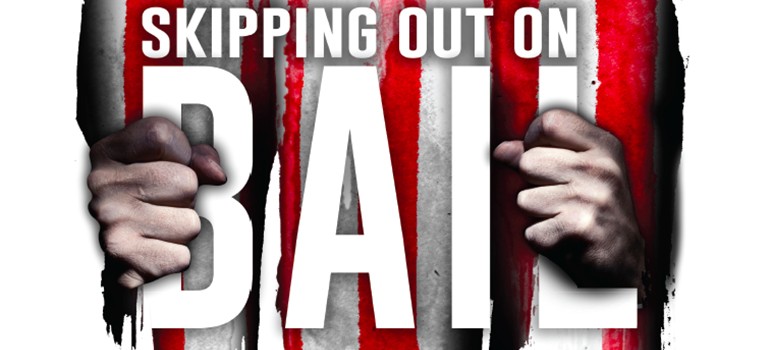
Hats off to Miss Filo for reading the law on bail, I wonder why the Attorney General of the State or California Kamala Harris didn’t pass that jem around to the rest of the prosecutor in the state.
Miss Wadsworth did nice job on this artical up to the end, then you had to fall back to your usual race baiting tactics.
One ataboy, and a shame on you!
Thank you for this revealing, and disturbing investigative report. Bail bond businesses, pawn shops, payday lenders and, for that matter, banks, used to be tightly regulated. The regulation structure included usury laws. Does anyone remember those? Today, they can all get away with charging interest and fees that in the past would have been defined as the federal crime of loansharking. https://www.newsreview.com/sacramento/ancient-evil-of-usury/content?oid=7610
And there are other serious ramifications to the ability to mount a criminal defense that disadvantage the poor who cannot afford bail vs. the wealthy who can: https://www.newsreview.com/sacramento/unequal-protection/content?oid=13932
Thanks again for this excellent article on a subject that has remained under the radar for so long.
Great article, Jenn.
The article about Santa Clara County’s overhaul of its bail system and the issues surrounding commercial bail bonds is eye-opening and deeply troubling. It vividly illustrates how this system, meant to ensure court appearances, has instead become a profit-driven enterprise at the expense of taxpayers and vulnerable individuals. The stories of exploitation, threats, and financial ruin suffered by those caught up in the bail bond industry paint a stark picture of its abuses. This article has helped me see the urgency of reforming our pretrial justice system. No one should be jailed simply because they can’t afford bail, and no one should profit from another person’s freedom. It’s time for change, and articles like this are crucial in raising awareness and advocating for a fairer, more equitable system.